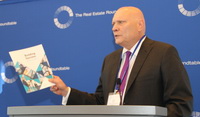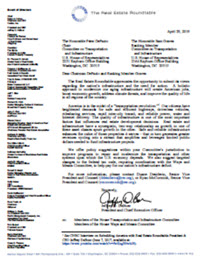
House Financial Services Committee Democrats this week proposed a federal reinsurance program for pandemic risks as part of the next round of congressional coronavirus relief. (HFS Committee memo)
- An April 6 memo from the committee’s majority Democratic staff states the recently enacted CARES Act was only a down payment on the relief needed to fully address the historic negative health and economic effects of COVID-19. For the next congressional package, the memo recommends policy proscriptions focused on both the crisis and the recovery that includes “Pandemic Risk Insurance.”
- The draft package’s reinsurance program proposal would be “similar to the Terrorism Risk Insurance Program for pandemic risks in order to promote the availability and affordability of insurance coverage that includes pandemic risks.”
- Whether existing business interruption insurance policies have virus and bacteria-related exclusions is a growing issue between closed businesses and their insurers. (BGov and Insurance Insider, April 9)
- Rep. Carolyn Maloney, (D-NY), chairwoman of the House Oversight and Reform Committee and a senior member of Financial Services Committee, circulated a letter this week informing colleagues in the House that she is “… developing the Pandemic Risk Insurance Act of 2020, to create the Pandemic Risk Reinsurance Program, a system of shared public and private compensation for business interruption losses resulting from future pandemics or public health emergencies.”
- Rep. Maloney’s note explains, “An ounce of prevention is worth a pound of cure. The Pandemic Risk Insurance Act (PRIA) would be an important step in our prevention efforts against future pandemics by both requiring insurance companies to offer business interruption insurance policies that cover pandemics, and creating a Pandemic Risk Reinsurance Program to ensure that there is sufficient capacity to cover these losses and protect our economy in the event of a future pandemic. Like the Terrorism Risk Insurance Act (TRIA), the federal government would serve as a backstop to maintain marketplace stability and to share the burden alongside private industry”
- Rep. Maloney’s pandemic program would be prospective – not retrospective.
- The current TRIA program would be triggered if losses from certified acts of terrorism attack exceed $200 million across all affected insurers. The establishment of the federal terrorism backstop – and its multiple reauthorizations over the years – has been a top policy priority for The Real Estate Roundtable since the 9/11 attacks. (Roundtable TRIA webpage)
- John Doyle, president and CEO of the insurance unit of Marsh & McLennan Companies Inc., offered in a March 30 letter to Congress and the White House to help create a federal pandemic backstop. Doyle wrote, “The basic framework of a pandemic risk insurance program would be to structure a risk sharing model between policyholders, insurers and the federal government.”
The Roundtable is working with policymakers and stakeholders to help develop an effective pandemic risk insurance program that addresses the current crisis and provides the economy with the coverage it needs to address future pandemic risks.
Senate Attempts to Develop a Phase 4 Coronavirus Relief Package
Senate Republicans and Democrats this week failed to reach agreement on “Phase 4” coronavirus legislation that would quickly follow and expand the Coronavirus Aid, Relief, and Economic Security (CARES) Act passed on March 27. Republicans sought more funding for the Paycheck Protection Program (PPP) for small businesses impacted by COVID-19, while Democrats emphasized any follow up measure to the “Phase 3” CARES Act should include increased funding for hospitals and local governments. (Akin Gump, April 9 and Deloitte, April 10)
- Negotiations between congressional leaders and the White House over a Phase 4 package are ongoing. With the Senate in pro forma session on Monday, there is a chance for a deal to be reached over the weekend.
- The Senate and House are currently scheduled to return for regular business the week of April 20. Health concerns for Members of Congress and their staff cast doubt on when they can return to Washington to consider legislation. The only way for Congress to currently vote on and send legislation to President Trump is by using the unanimous consent process, which can be blocked by any single member.
- Rep. Thomas Massie (R-KY) last month forced hundreds of his colleagues to return to the Capitol to pass the CARES Act. He warned on April 8 that he may again block unanimous consent for a Phase 4 coronavirus bill if it is not held with a roll call vote. (The Hill, April 8)
President Trump wrote on Twitter March 31 that a larger infrastructure should be included in the next coronavirus relief bill. “With interest rates for the United States being at ZERO, this is the time to do our decades long awaited Infrastructure Bill,” President Trump wrote. “It should be VERY BIG & BOLD, Two Trillion Dollars, and be focused solely on jobs and rebuilding the once great infrastructure of our Country! Phase 4.”
# # #









